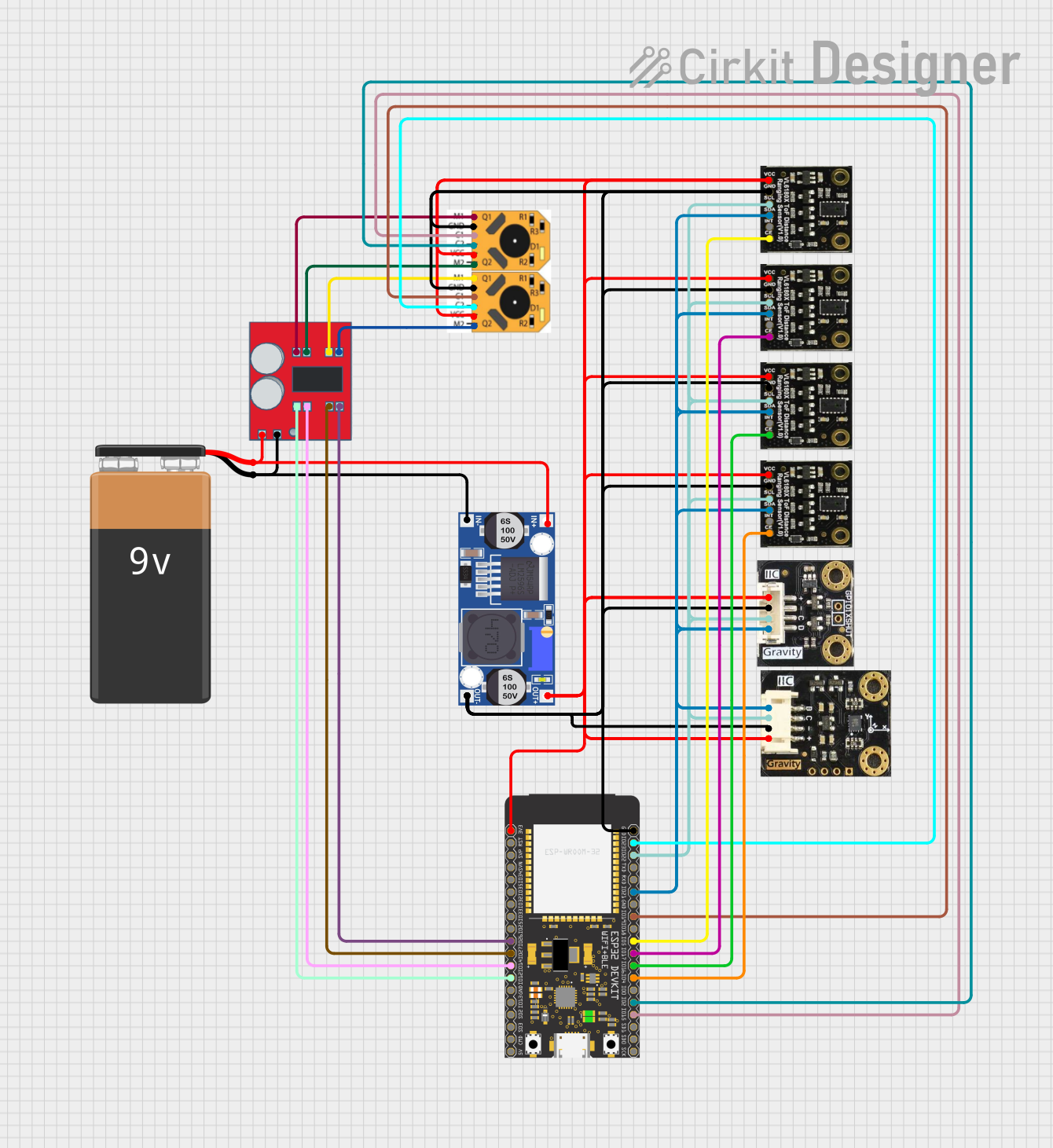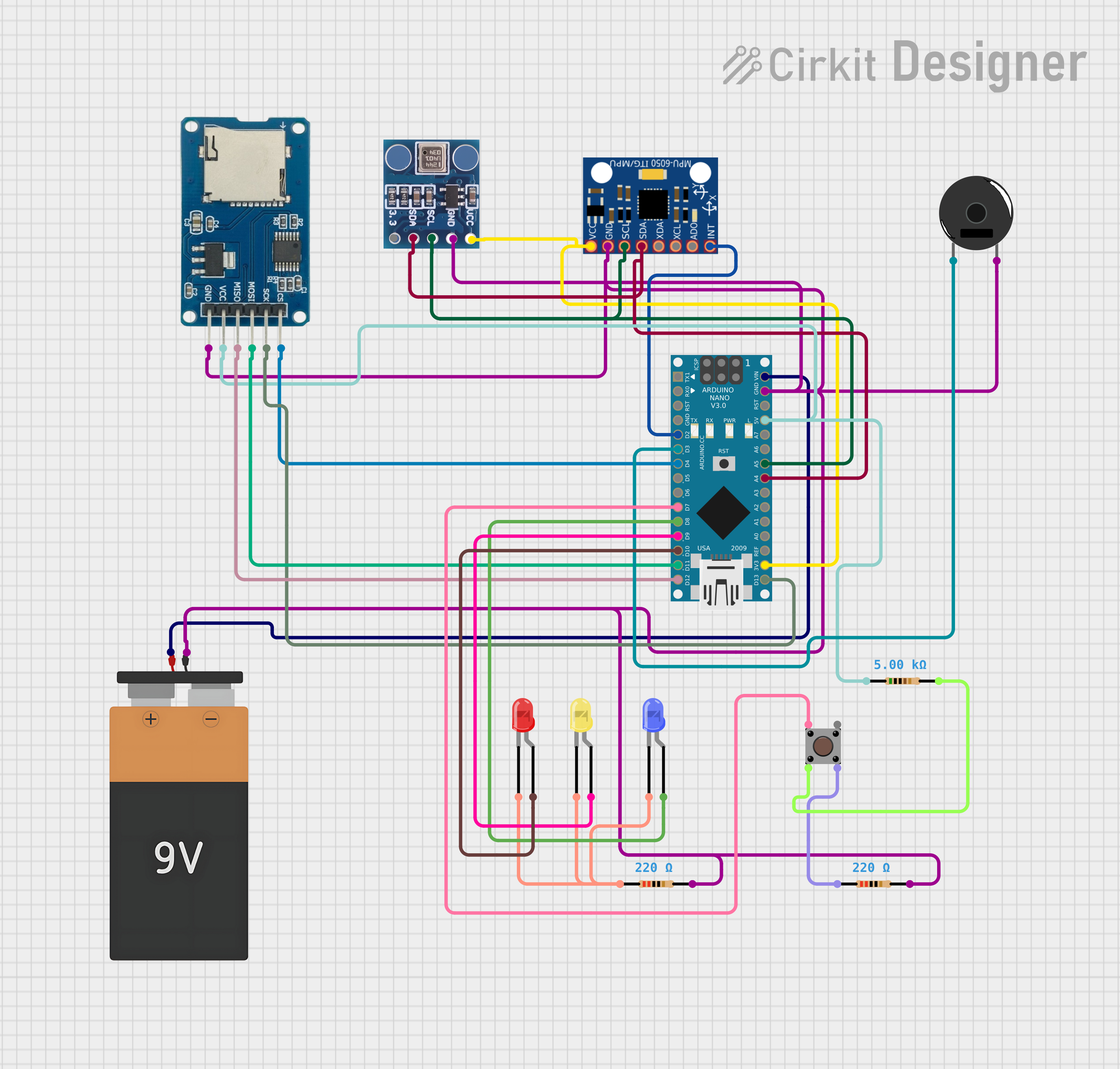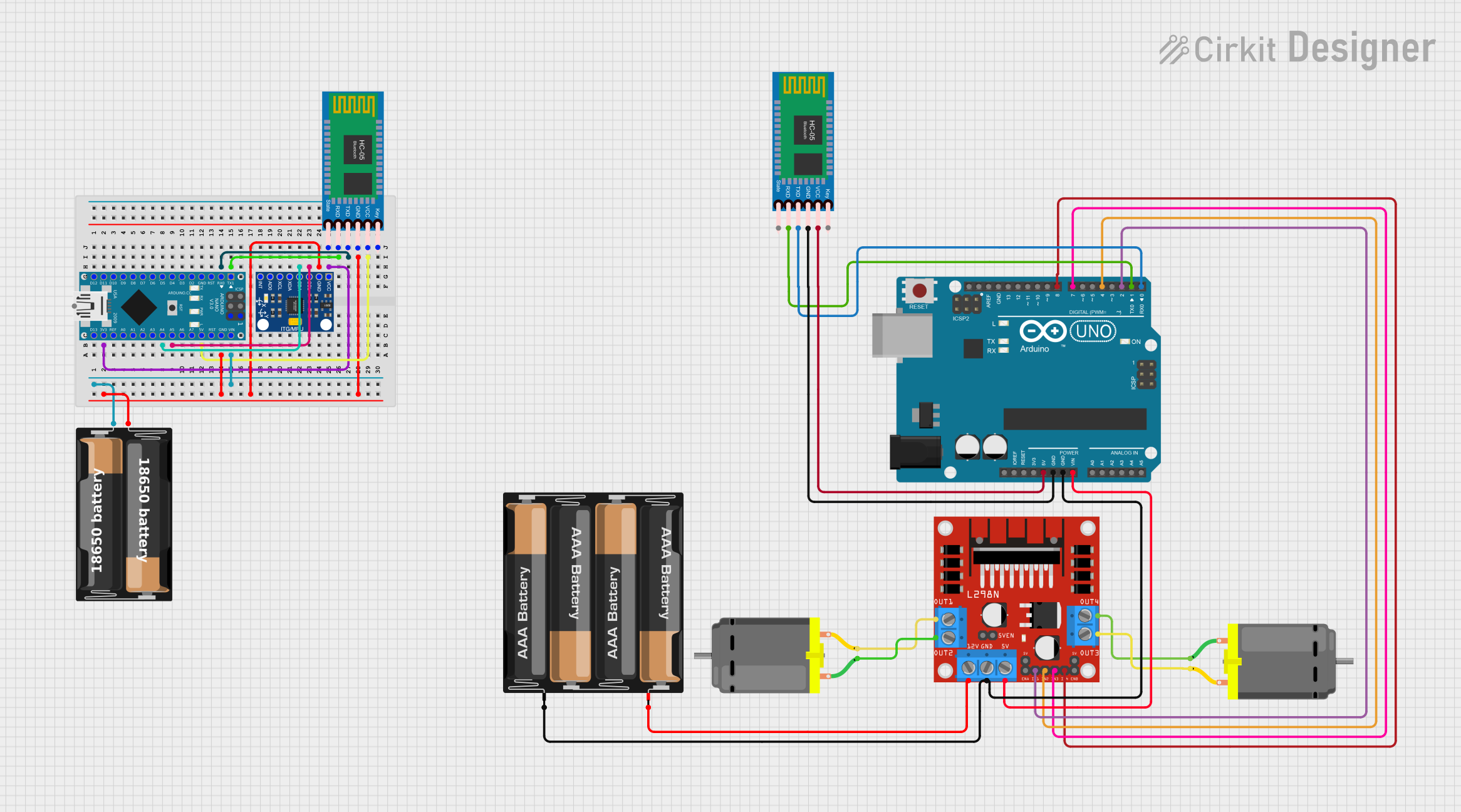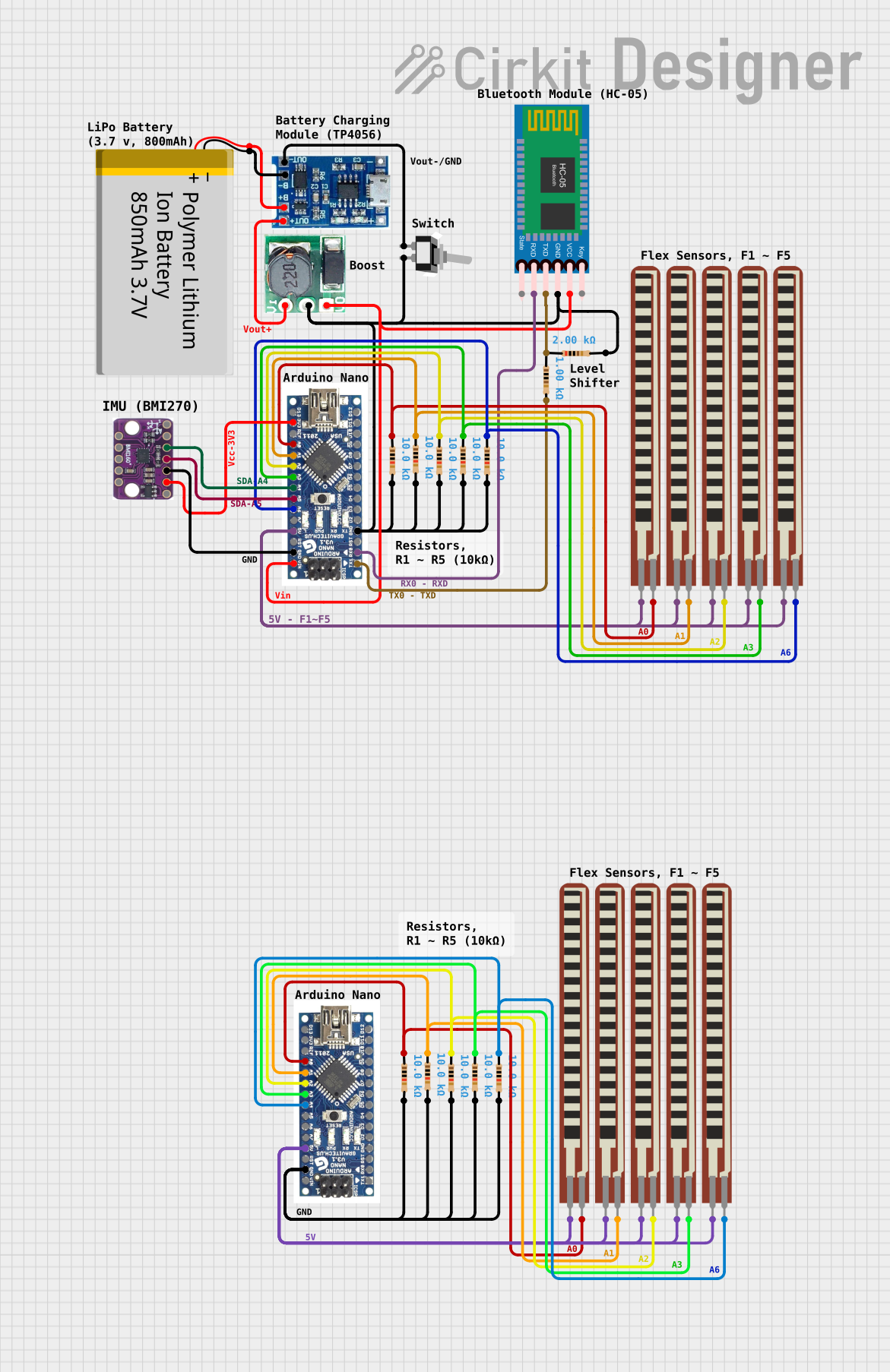
How to Use nibm: Examples, Pinouts, and Specs

 Design with nibm in Cirkit Designer
Design with nibm in Cirkit DesignerIntroduction
The NIBM (Non-Isolated Buck Module), manufactured by Flame with part ID fire, is a highly efficient DC-DC converter designed to step down voltage from a higher input to a lower output. Unlike isolated converters, the NIBM does not provide electrical isolation between the input and output, making it ideal for applications where isolation is not required but high efficiency and compact design are critical.
Explore Projects Built with nibm

 Open Project in Cirkit Designer
Open Project in Cirkit Designer
 Open Project in Cirkit Designer
Open Project in Cirkit Designer
 Open Project in Cirkit Designer
Open Project in Cirkit Designer
 Open Project in Cirkit Designer
Open Project in Cirkit DesignerExplore Projects Built with nibm

 Open Project in Cirkit Designer
Open Project in Cirkit Designer
 Open Project in Cirkit Designer
Open Project in Cirkit Designer
 Open Project in Cirkit Designer
Open Project in Cirkit Designer
 Open Project in Cirkit Designer
Open Project in Cirkit DesignerCommon Applications and Use Cases
- Power management in embedded systems
- Voltage regulation for microcontrollers and sensors
- Battery-powered devices
- LED drivers
- Industrial automation systems
Technical Specifications
The following table outlines the key technical specifications of the NIBM:
| Parameter | Value |
|---|---|
| Input Voltage Range | 6V to 36V |
| Output Voltage Range | 1.2V to 24V (adjustable) |
| Maximum Output Current | 3A |
| Efficiency | Up to 95% |
| Switching Frequency | 150 kHz |
| Operating Temperature | -40°C to +85°C |
| Dimensions | 22mm x 17mm x 6mm |
Pin Configuration and Descriptions
The NIBM module has the following pin configuration:
| Pin | Name | Description |
|---|---|---|
| 1 | VIN | Input voltage pin. Connect to the positive terminal of the input power source. |
| 2 | GND | Ground pin. Connect to the negative terminal of the input power source. |
| 3 | VOUT | Output voltage pin. Provides the regulated output voltage. |
| 4 | ADJ (optional) | Voltage adjustment pin. Connect a resistor or potentiometer to adjust output. |
Usage Instructions
How to Use the NIBM in a Circuit
- Connect the Input Voltage:
- Attach the VIN pin to the positive terminal of your power source (6V to 36V).
- Connect the GND pin to the negative terminal of your power source.
- Connect the Load:
- Attach the VOUT pin to the positive terminal of your load.
- Ensure the load's ground is connected to the GND pin.
- Adjust the Output Voltage (if needed):
- Use the ADJ pin to fine-tune the output voltage. Connect a resistor or potentiometer as specified in the datasheet to achieve the desired voltage.
Important Considerations and Best Practices
- Input Voltage Range: Ensure the input voltage is within the specified range (6V to 36V). Exceeding this range may damage the module.
- Heat Dissipation: For high current loads, consider adding a heatsink or improving airflow around the module to prevent overheating.
- Output Voltage Adjustment: If using the ADJ pin, verify the resistor or potentiometer value to avoid setting an output voltage beyond the module's limits.
- Capacitors: Add input and output capacitors (e.g., 10µF to 100µF) close to the module to improve stability and reduce noise.
Example: Using NIBM with an Arduino UNO
The NIBM can be used to power an Arduino UNO by stepping down a 12V input to 5V. Below is an example circuit and code:
Circuit Connections
- Connect a 12V power source to the VIN and GND pins of the NIBM.
- Adjust the output voltage to 5V using the ADJ pin.
- Connect the VOUT pin of the NIBM to the 5V pin of the Arduino UNO.
- Connect the GND pin of the NIBM to the GND pin of the Arduino UNO.
Arduino Code Example
// Example code to blink an LED using Arduino UNO powered by NIBM module
const int ledPin = 13; // Pin connected to the onboard LED
void setup() {
pinMode(ledPin, OUTPUT); // Set the LED pin as an output
}
void loop() {
digitalWrite(ledPin, HIGH); // Turn the LED on
delay(1000); // Wait for 1 second
digitalWrite(ledPin, LOW); // Turn the LED off
delay(1000); // Wait for 1 second
}
Troubleshooting and FAQs
Common Issues and Solutions
No Output Voltage:
- Cause: Input voltage is not within the specified range.
- Solution: Verify the input voltage is between 6V and 36V.
Overheating:
- Cause: High current load or insufficient cooling.
- Solution: Add a heatsink or improve ventilation around the module.
Unstable Output Voltage:
- Cause: Insufficient input/output capacitors.
- Solution: Add capacitors (e.g., 10µF to 100µF) close to the module.
Output Voltage Not Adjustable:
- Cause: Incorrect resistor or potentiometer value on the ADJ pin.
- Solution: Check the resistor/potentiometer value and ensure it matches the desired output voltage.
FAQs
Q: Can the NIBM power a Raspberry Pi?
A: Yes, the NIBM can power a Raspberry Pi if the input voltage is within range and the output is adjusted to 5V with sufficient current (at least 2.5A for most models).
Q: Is the NIBM suitable for battery-powered applications?
A: Yes, the NIBM is highly efficient and compact, making it ideal for battery-powered devices.
Q: Can I use the NIBM to step up voltage?
A: No, the NIBM is a buck converter and can only step down voltage. For stepping up voltage, use a boost converter.